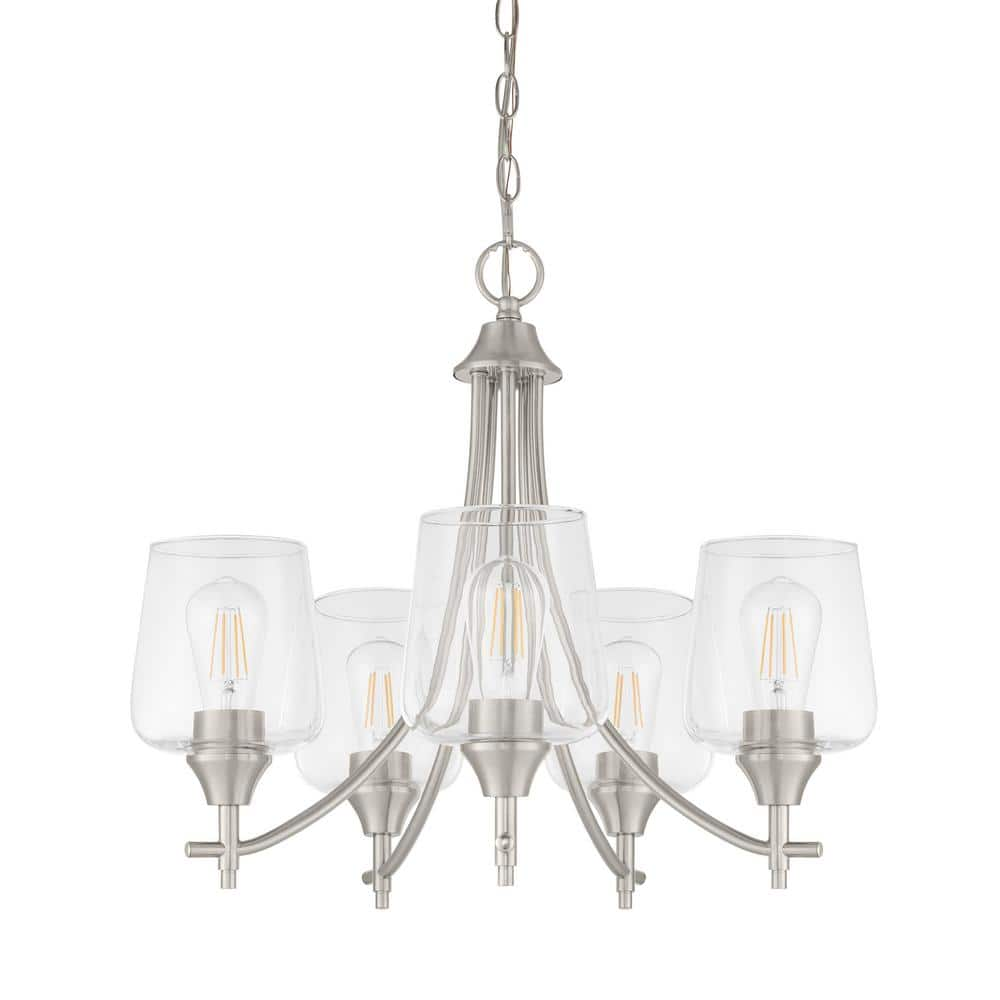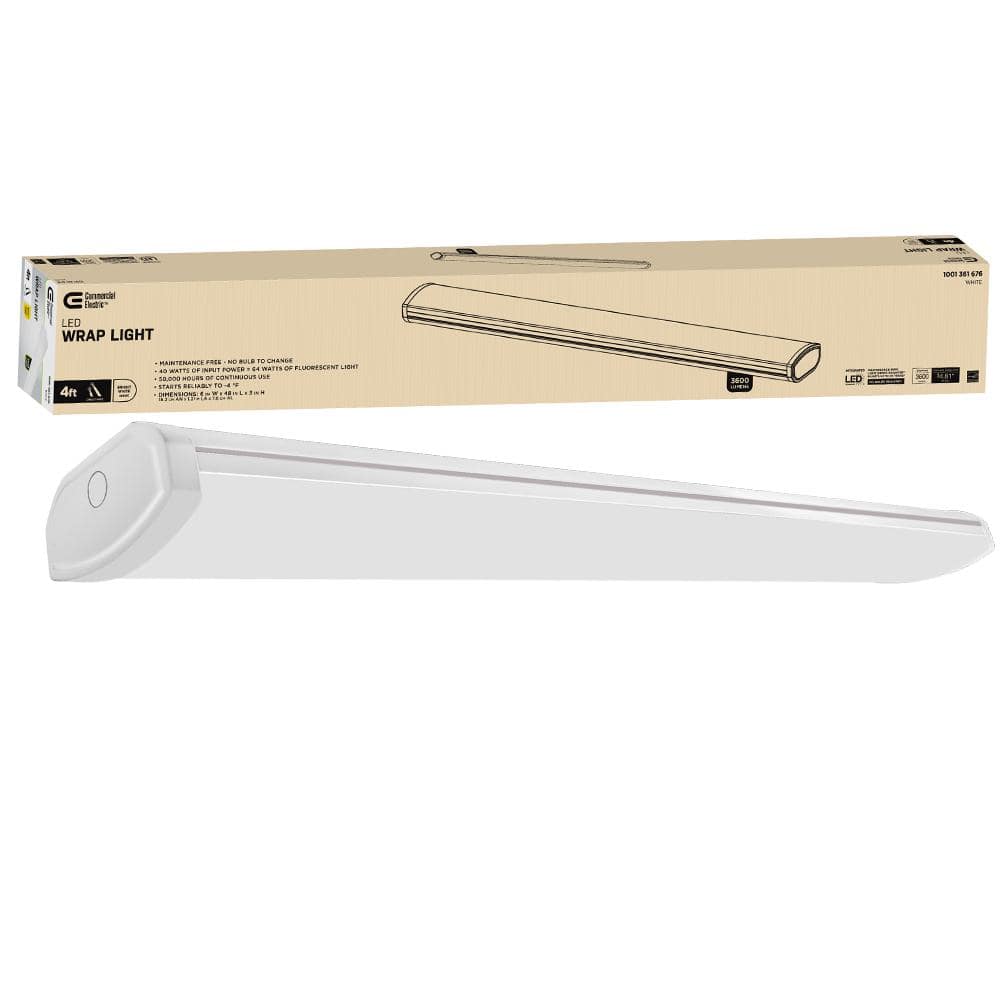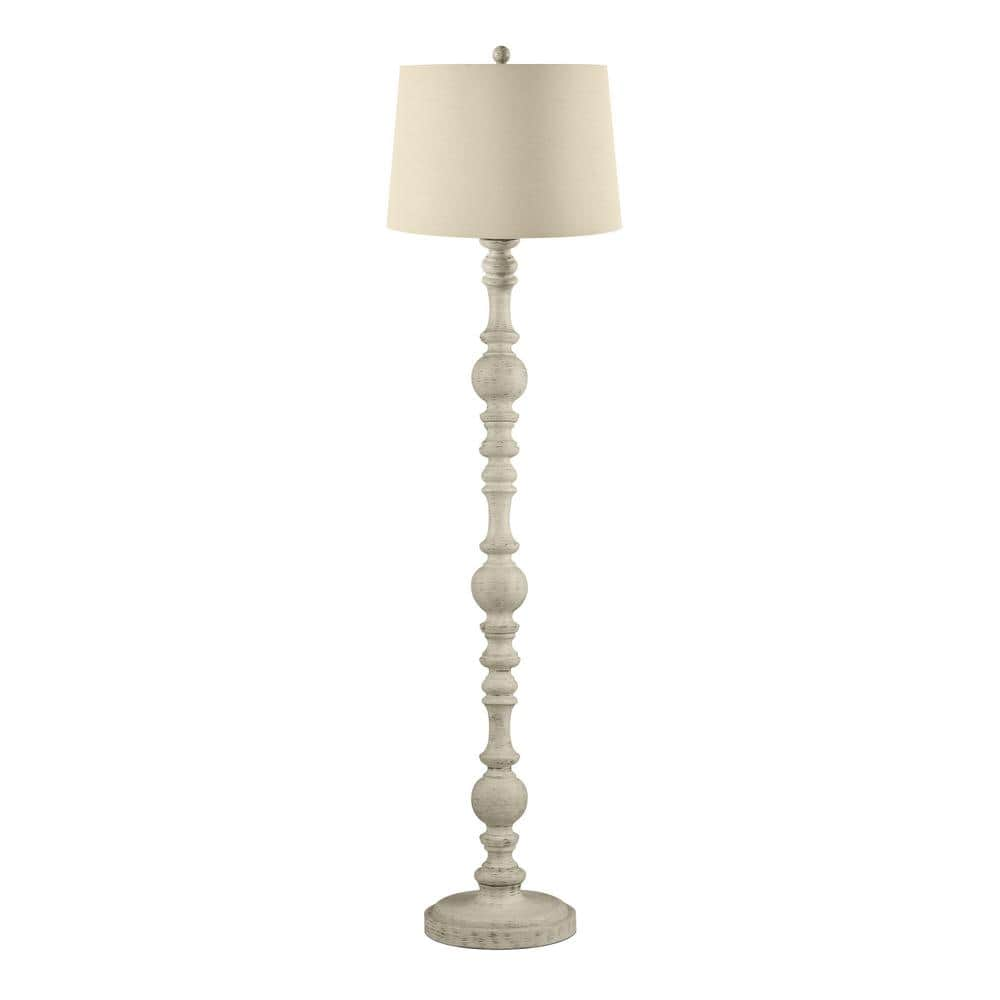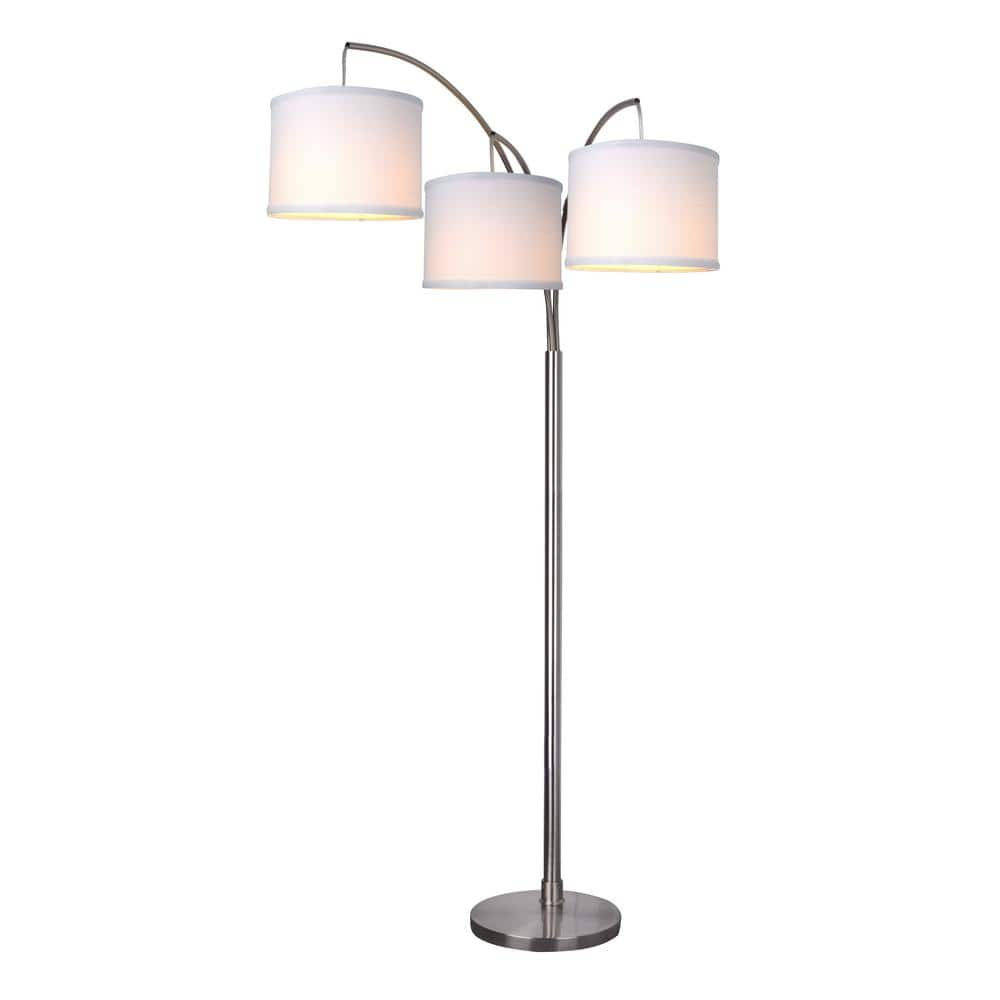Hampton Bay Pavlen 23 in. 5-Light Brushed Nickel Chandelier with Clear Glass Shades
Pre-assembled design facilitates hassle-free installation. Made of high-quality metal for durable use. ETL listed for safe and reliable use.
This stunning design features a burnished brushed nickel metal finish with clear glass shades inspired by the curved edges of a wine glass. Hanging above the dining room, living room, foyer and bedroom for the next family get together. This 5-Light Chandelier features a 23 in. Dia, a body 19.25 in. H and an overall 83.5 in. H It also features 60 in. of adjustable chain and uses 5 60-Watt (maximum) bulbs. The piece is pre-assembled and easy to install.
- 5-light brushed nickel metal chandelier with clear glass shades creates a refined contemporary look, ideal for any dining room, living room or foyer
- Assembled product dimensions: 23 in. L x 23 in. W x 83.5 in. H
- Adjustable height: includes 60 in. adjustable chain for an overall hanging height from 22.8 in. H to 83.5 in. H (total drop length from ceiling to bottom of fixture)
- Uses 5 E26 socket, 60-Watt or LED equivalent bulbs (not included), we suggest using vintage, filament bulbs to complete the look
- Sturdy metal in a burnished brushed nickel finish
- Ceiling canopy measures: 5 in. D and can be mounted on level, textured or sloped ceilings
- cETLus Listed, simple assembly required, hardwire components included
Additional information
| Chain Length (in.) | 60 |
|---|---|
| Fixture Depth (in.) | 23 |
| Fixture Height (in.) | 19.25 |
| Fixture Weight (lb.) | 9.9 |
| Fixture Width (in.) | 23 |
| Maximum Hanging Length (in.) | 83.5 |
| Mounting Deck Height (in.) | 1 |
| Mounting Deck Width (in.) | 5 |
| Certifications and Listings | ETL Listed |
| Manufacturer Warranty | 3 year Limited Warranty |






by Kimpchi
Easy to assemble but a little difficult to adjust to hang straight
by Louis
Love the light, very beautiful in my dining room.